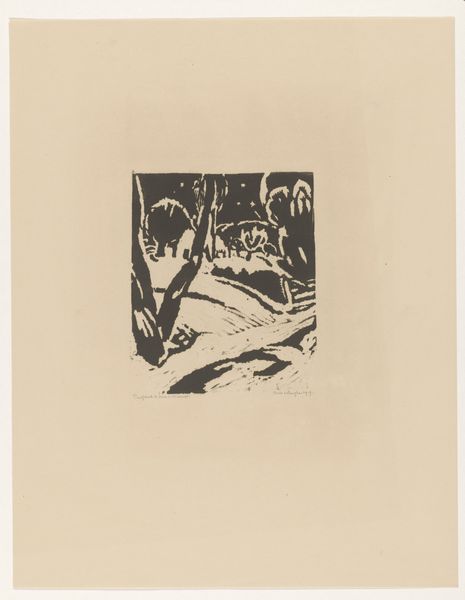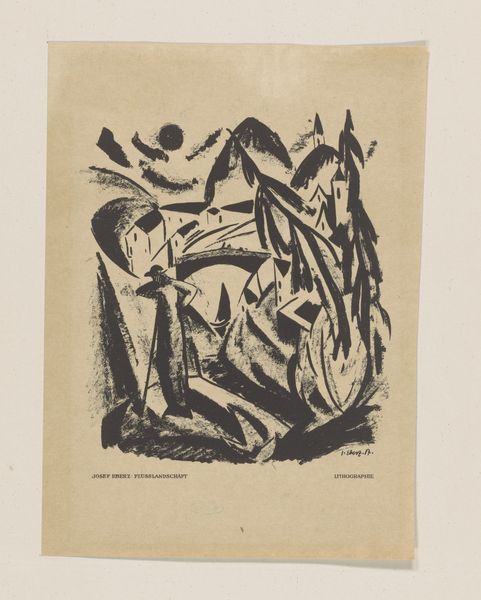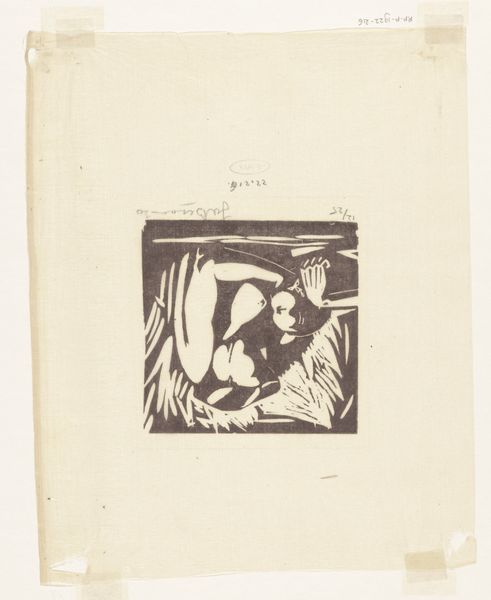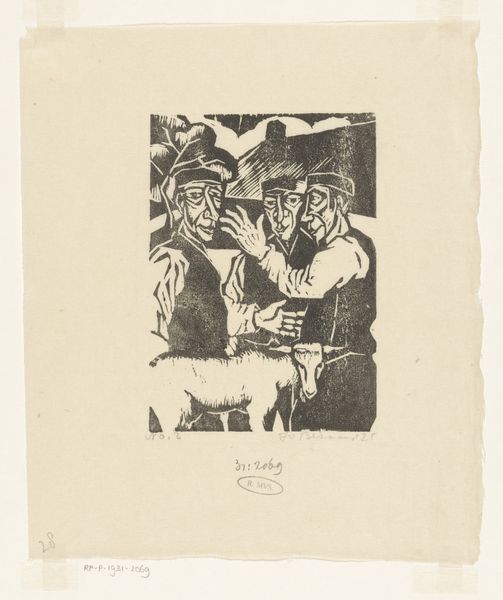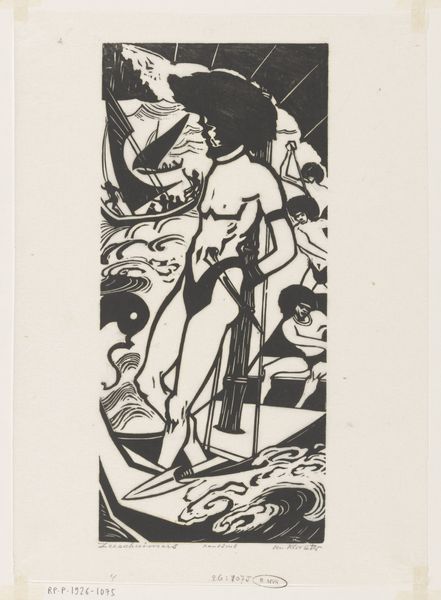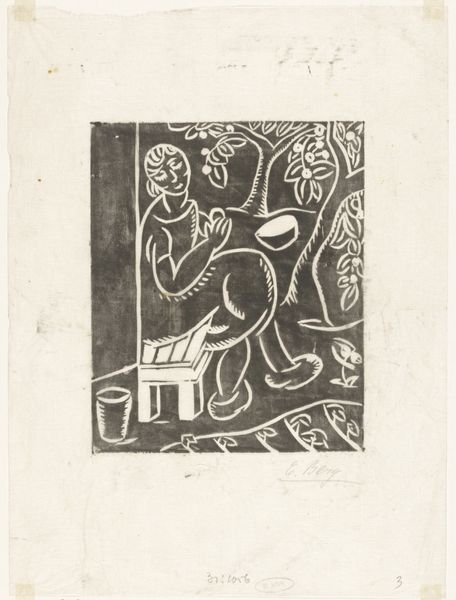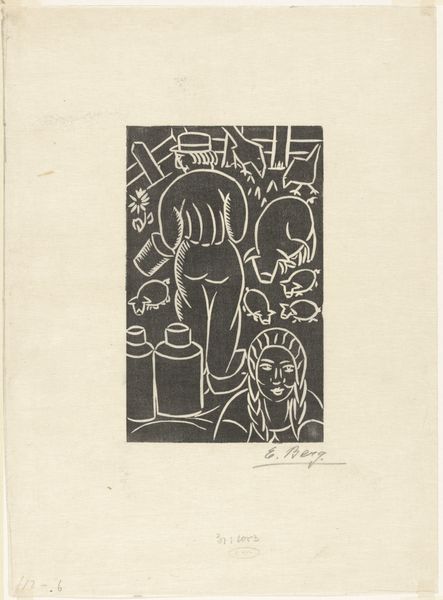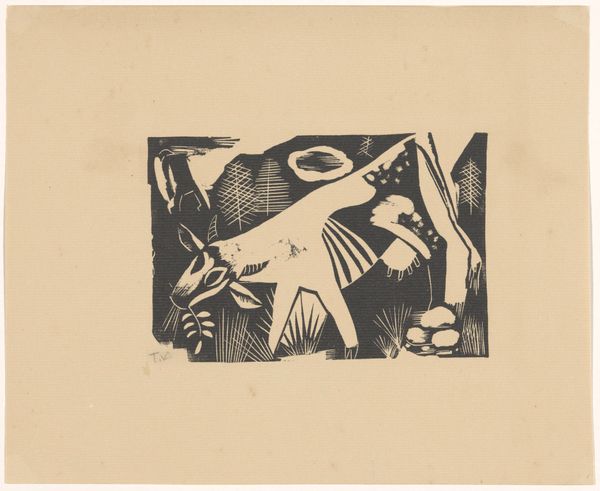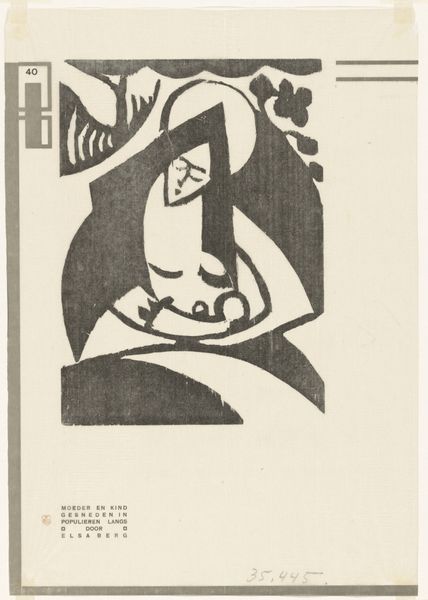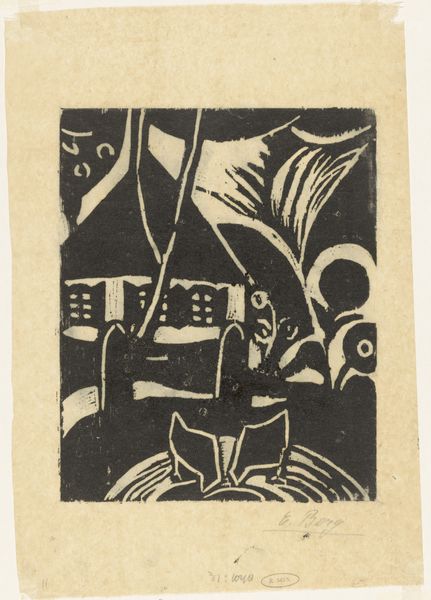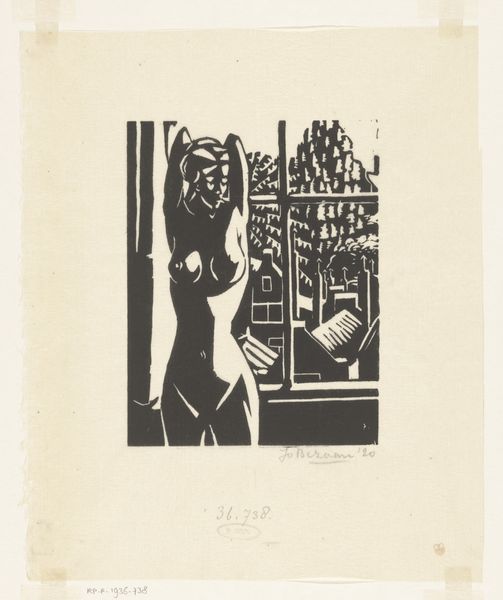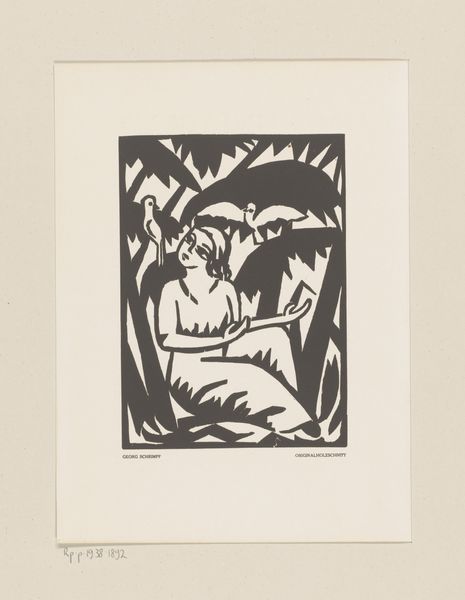
print, woodcut
# print
#
german-expressionism
#
figuration
#
expressionism
#
woodcut
Dimensions: height 160 mm, width 122 mm, height 321 mm, width 226 mm
Copyright: Rijks Museum: Open Domain
Curator: Looking at this woodcut by Jo Bezaan, titled "Dorscher" from 1924, now held here at the Rijksmuseum, what’s your first impression? Editor: It feels like a scream rendered in wood! Stark, raw, all blacks and whites... sort of confrontational, don’t you think? The woodcut feels brutal; the butcher looming over the animal. Curator: "Brutal" is a good descriptor. Bezaan employs the graphic starkness characteristic of German Expressionism here. Woodcut as a medium lends itself to such dramatic contrasts. Consider how the labor is rendered – not just the act of slaughter but the whole system that enables it, down to the materiality of the work itself. Editor: Yes, the act itself looks so performative... Look at the awkward positioning of the figure, with arms raised above, an animal by their side drinking water and completely unaware... it also feels almost theatrical. There's also something slightly disturbing and yet deeply familiar about the scene; a commonplace activity imbued with some strange dread. Curator: Indeed. Woodcuts were inexpensive to produce, facilitating wider dissemination. Bezaan, in choosing this medium, could reach a broader audience with a visual commentary—a potent force in the social landscape of the 1920s, and German Expressionism served as the perfect visual and stylistic messenger for those kinds of potent ideas. Editor: And those sharp, angular lines! They're like knives themselves, aren’t they? Even the roof framing becomes menacing, pointing down like a jagged set of teeth. Bezaan isn't just showing us a slaughter; he’s forcing us to confront our own participation in the cycle. Curator: Precisely. The materiality isn't separate from the message; the harshness of the medium reinforces the harshness of the subject. It pushes us to think about labor and our everyday acts in context with early 20th century consumption culture. Editor: It's quite bleak. You know, sometimes art helps us look away. This print almost demands that we look directly into what is unpleasant to think about in a hyperstylized fashion, a feat in and of itself! Curator: A bleak and thought-provoking glimpse, made of striking marks—and an essential prompt for critical reflection even today.
Comments
No comments
Be the first to comment and join the conversation on the ultimate creative platform.
